
Next to the mausoleum is Ho Chi Minh Presidential Palace, a relic complex where Ho Chi Minh lived and worked from December 1954 to September 1969. Of particular interest is the presidential palace where many an official function took place and the house where Ho Chi Minh lived and worked from 1954 to 1958. The highlight of the complex has to be the historic house-on-stilts where Ho Chi Minh lived and worked from May 1958 to August 1969. The modest house symbolizes his way of simplicity, modesty, gentleness and dedication to the nation and its people.
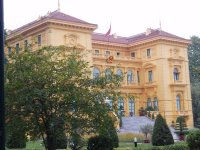
 Ho Chi Minh's house-on-stilts
Ho Chi Minh's house-on-stilts
Within walking distance of the presidential palace is One Pillar Pagoda, consisting of a pagoda and a tower built in the middle of a square lake. The pagoda is dedicated to Goddess Kuan Yin. Legend has it that a wealthy man sought divine help to grant him a son and when his wish came true, he built the pagoda to as a symbol of gratitude to the Power above.
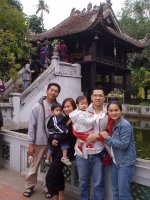
Temple of Literature was founded in 1070 under King Ly Thanh Tong and is dedicated to Confucius. Six years later during the reign of King Ly Nhan Tong, it was established as the country's first university to train talented men for the nation. It was the biggest educational center in the country under the feudal system, having trained thousands of scholars. The courtyard features 82 stone tablets, which recorded the name and native places of 1307 graduates of 82 Royal exams held from 1442 to 1779. Each stone tablet was mounted on the back of a tortoise, one of the country's four holy creatures, along with the dragon, unicorn and phoenix, which can live a long and healthy life.

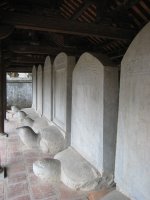 A portion of the stone tablets
A portion of the stone tablets
Hoan Kiem Lake is a pleasant park in the center of town. Hoan Kiem means "returned sword", and the name comes from a legend in which King Le Loi used a magical sword to drive the Chinese away. While boating on the lake one day, he encountered a giant turtle, which grabbed the sword and carried it down the depth of the lake, returning it to the gods from whom it had come.
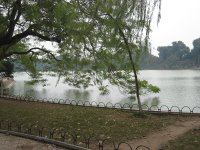
North of Hoan Kiem Lake, the Old Quarter, as the name suggests, is the older part of the city where most of the action is. Artisans and craftsmen have set up shop here for generations, and each street is dedicated to selling only one specialty item, such as wedding cards, beddings and mattresses, prayers items, flowers, babies stuff, books, motorcycle seat covers, hardwares, toys, medicines and herbs.

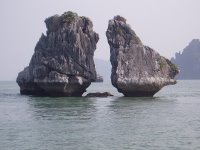







No comments:
Post a Comment